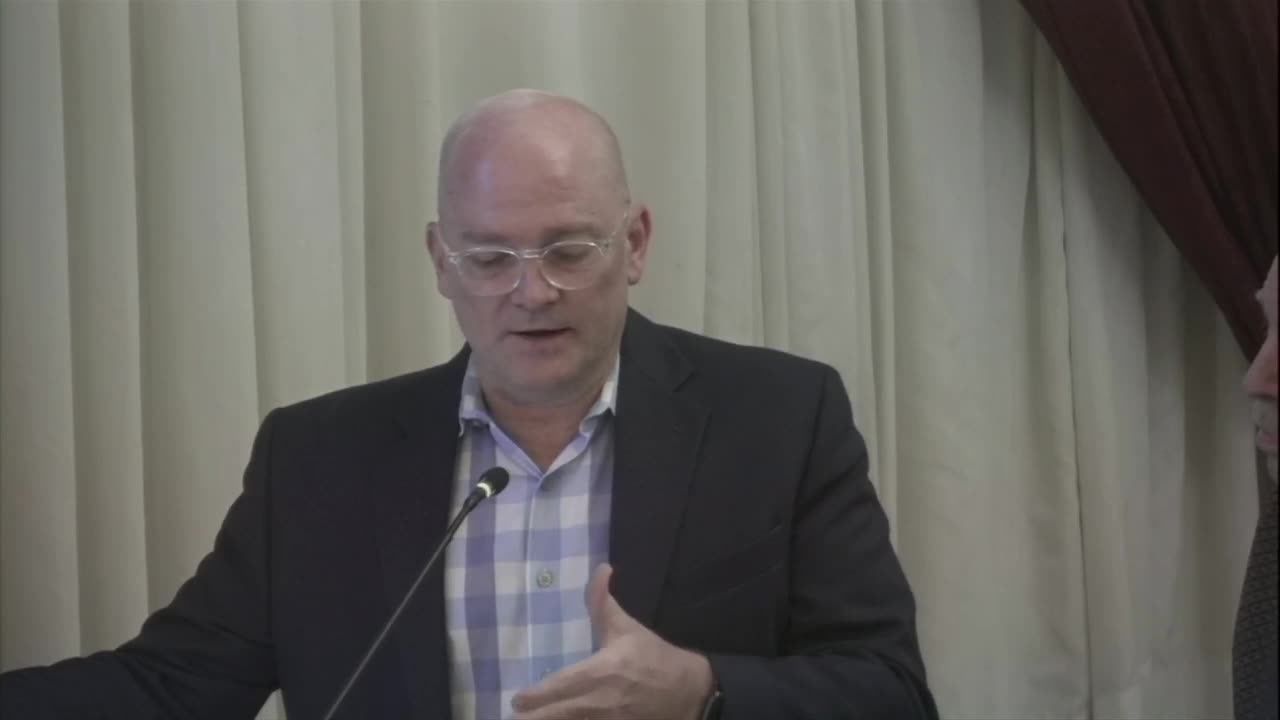Historic review board seeks design changes, more detail before approving two small-cell installations
October 16, 2025 | St. Augustine, St. Johns County , Florida
This article was created by AI summarizing key points discussed. AI makes mistakes, so for full details and context, please refer to the video of the full meeting. Please report any errors so we can fix them. Report an error »

The Historic Architecture Review Board on Oct. 16 continued review of a request from Verizon (HP2025-0011) to replace two existing light poles with taller combined streetlight/telecommunications poles — one in the Tokes Place parking lot and one adjacent to 69A Cordova Street — and asked the applicant to return with clearer, scaled drawings, alternative lower-height options and documentation showing where power and equipment will be concealed.
Julie Seymour, historic preservation staff, told the board the proposed locations fall inside St. Augustine’s National Register Historic District and the National Historic Landmark Area; the Cordova location sits across from the Ponce de Leon Hotel. She said the applicant narrowed prior options to the two existing-pole locations, and staff had sought a luminaire design that better matches downtown proportions.
Applicant representatives, including Christopher Milne (Verizon) and consultant Courtney Barnard, presented revised pole and luminaire designs and photo simulations. They said they coordinated with the utility (FPL) and would replace the existing poles with a new standard that accommodates the antenna arrays. The applicants said they could relocate equipment at applicants’ cost if the city’s future Cordova Street streetscape requires a different pole in the future.
Speakers and board members pressed for specific changes: clearer scaled elevations that match the photo simulations, shop drawings showing luminaire mounting heights, and options that reduce above‑luminaire massing (for example, moving radios and electronics to ground-mounted cabinets disguised as street furniture, or using rooftop or building-mounted locations where technically feasible). Public commenter P.J. Kollega noted he preferred use of rights-of-way for attachments rather than rooftop mounts and urged clarity on future streetscape coordination.
Board members expressed concern about the visual prominence of a 35-foot pole in the colonial core and encouraged applicants to pursue the lowest workable height, to demonstrate range/coverage trade-offs, and to present a version that places most radios/equipment at the base or in discrete housings rather than above the luminaire. The applicant agreed to provide additional information and a photo‑simulation animation showing accurate heights and sightlines.
The board voted to continue the application to its Nov. 20 meeting. Staff and the applicant will work to provide: accurate scaled comparisons of existing poles and proposed poles, clear cut-sheets or shop drawings for luminaires and poles, alternative lower-height options for the Tokes Place site, and demonstration of ground-mounted cabinet or building-mounted alternatives for Cordova Street.
Julie Seymour, historic preservation staff, told the board the proposed locations fall inside St. Augustine’s National Register Historic District and the National Historic Landmark Area; the Cordova location sits across from the Ponce de Leon Hotel. She said the applicant narrowed prior options to the two existing-pole locations, and staff had sought a luminaire design that better matches downtown proportions.
Applicant representatives, including Christopher Milne (Verizon) and consultant Courtney Barnard, presented revised pole and luminaire designs and photo simulations. They said they coordinated with the utility (FPL) and would replace the existing poles with a new standard that accommodates the antenna arrays. The applicants said they could relocate equipment at applicants’ cost if the city’s future Cordova Street streetscape requires a different pole in the future.
Speakers and board members pressed for specific changes: clearer scaled elevations that match the photo simulations, shop drawings showing luminaire mounting heights, and options that reduce above‑luminaire massing (for example, moving radios and electronics to ground-mounted cabinets disguised as street furniture, or using rooftop or building-mounted locations where technically feasible). Public commenter P.J. Kollega noted he preferred use of rights-of-way for attachments rather than rooftop mounts and urged clarity on future streetscape coordination.
Board members expressed concern about the visual prominence of a 35-foot pole in the colonial core and encouraged applicants to pursue the lowest workable height, to demonstrate range/coverage trade-offs, and to present a version that places most radios/equipment at the base or in discrete housings rather than above the luminaire. The applicant agreed to provide additional information and a photo‑simulation animation showing accurate heights and sightlines.
The board voted to continue the application to its Nov. 20 meeting. Staff and the applicant will work to provide: accurate scaled comparisons of existing poles and proposed poles, clear cut-sheets or shop drawings for luminaires and poles, alternative lower-height options for the Tokes Place site, and demonstration of ground-mounted cabinet or building-mounted alternatives for Cordova Street.
Don't Miss a Word: See the Full Meeting!
Go beyond summaries. Unlock every video, transcript, and key insight with a Founder Membership.
✓
Get instant access to full meeting videos
✓
Search and clip any phrase from complete transcripts
✓
Receive AI-powered summaries & custom alerts
✓
Enjoy lifetime, unrestricted access to government data
30-day money-back guarantee
